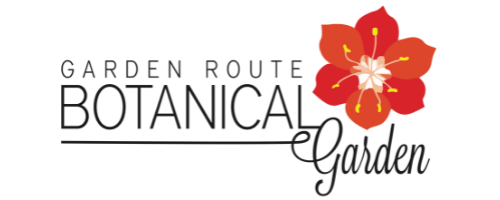
Newsletter
March-May 2002
News
Remarkable Finds at the GRBG
Over the last few months, a number of GRBG Members and volunteers have had the good fortune of coming across some unexpected and intriguing plant and animal species while out and about in the Garden.
Nightjar
A stunning photo of a Nightjar sp. was taken by Etienne de Beer in the Mushroom Meander forest in the early morning hours. Its intricate markings baffle specialists and this rare sighting has motivated us to be on the lookout for this elusive diurnal bird.
Once found, our main aim will be to determine whether the specimen is a Fiery-necked Nightjar or a Swamp Nightjar. The Fiery-necked Nightjar (Caprimulgus pectoralis) is a local resident which nests on the ground, deeply camouflaged by its markings, and whose calls are usually heard at sunset. The Swamp Nightjar (Caprimulgus natalensis), however, has a distribution range to the north-east of the Garden Route and has a distinctive buzzing call. It looks illusively similar to the Fiery-necked local, but has brilliant black markings on its wings and tail feathers.
GRBG Management and author and bird expert
Peter Ginn hopes to capture the Nightjar (pictured on the next page) and take a closer look at its tail and wing feathers to ensure an accurate identification. As Ginn reminded us, the Swamp Night Jar does not occur in this area… but birds have wings.
Leto venus
In the early morning hours of March, Colin Ralston stumbled upon some interesting activity around the base of the Keurboom tree in the Tea Garden. Shavings and dust littered the forest floor and active holes could be seen roughly 30cm from the base of the tree trunk.
This is a clear indication of the Leto venus Moth’s larval activity. The larvae burrow into the stem of the tree as it grows and can take many years to reach maturity before pupating into one of the country’s largest moth species.
Acting GRBG Chairperson Elizabeth Boshoff stunned us all by finding an adult specimen in her home garden (pictured below). It has been placed in a deep freezer until the experts collect it for studying!
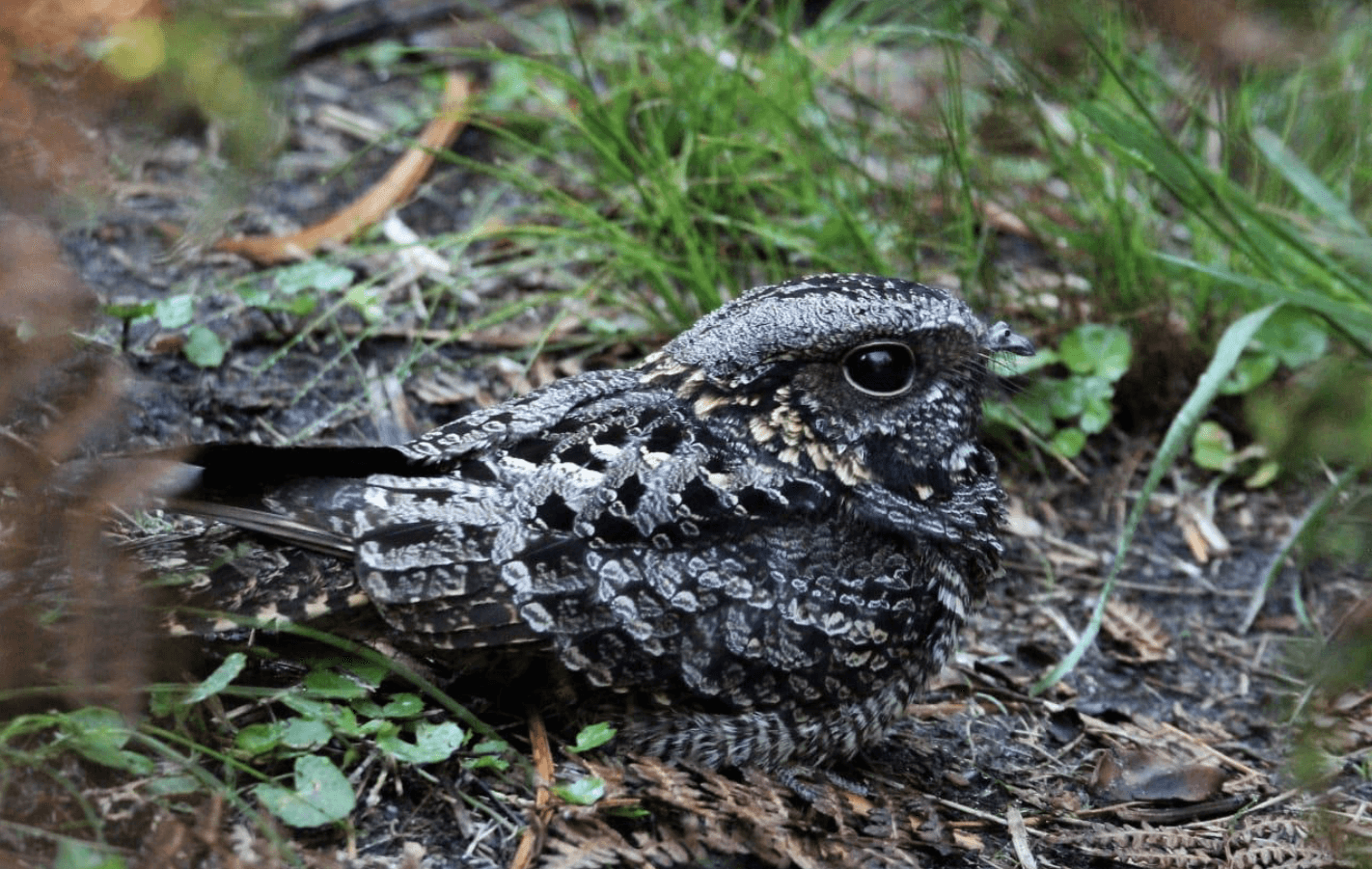
Above: Fiery-necked Night Jar or Swamp Night Jar? The hunt is on to find, study and accurately identify this seldom-seen bird.
Image by Etienne de Beer.
Right: Big and Beautiful. The adult Leto venus moth specimen found in Elizabeth Boshoff’s home garden.
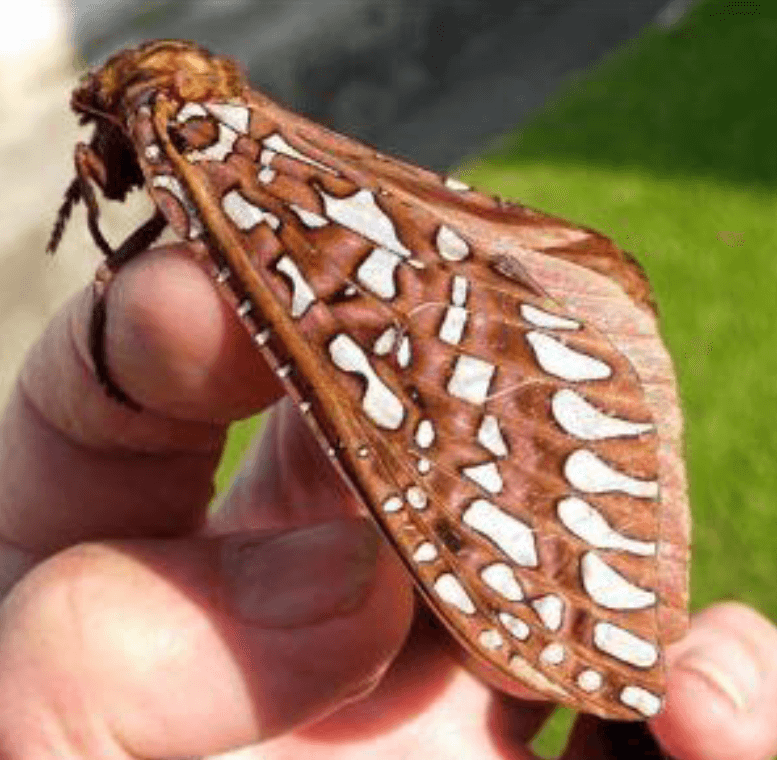
Newsflash!
The next Annual General Meeting of the GRBG Trust will be held on Saturday, 25 June 2022 in the Garden’s Environmental Education Centre at 10:00. All GRBG Members are invited. Further details and the meeting agenda will be emailed to Members within the next couple of weeks.
Ongoing Projects at the GRBG
An update on some of the exciting projects underway in the Garden
The Propagation Yard and Accessioning All our Plants
We have embarked on a huge and very long-term activity, namely to get all our plants accessioned. Unfortunately, up to this point, as identified by recent SANBI evaluations, details of where each plant planted in the Garden originated from were not documented. If we want the GRBG to become a fully-fledged botanical garden, it is essential that the information about the origin of all plants planted in the Garden be available. Hence the drive to find plants in nature, document their origin, and propagate them for use in the Garden.
To make the huge effort viable, we had to increase the capacity of our Propagation Yard and to ensure that the cuttings collected in the field on field trips and the seeds sown have a good chance of survival. Fortunately, a very eager and enthusiastic volunteer joined the Garden. Mr Doug Cooke took control of the propagation Yard and transformed it.
A budget for the increase in capacity and the general upgrade of the Propagation Yard came to R80 000. A donation of R40 000 was received from a member. Should anybody else feel inclined to make a contribution, it will be very welcome.
The Propagation Yard staff went through intensive training to ensure that the survival rate of cuttings and seeds would increase. This was a success because the survival rate increased from 3% to 40%.
The first aim with propagation is to cultivate the plants we need in the Botanical Garden. After supplying the Garden, extra plants can be sold in the nursery or to other clients. Trees are also used for tree-planting events at schools in the Garden Route.
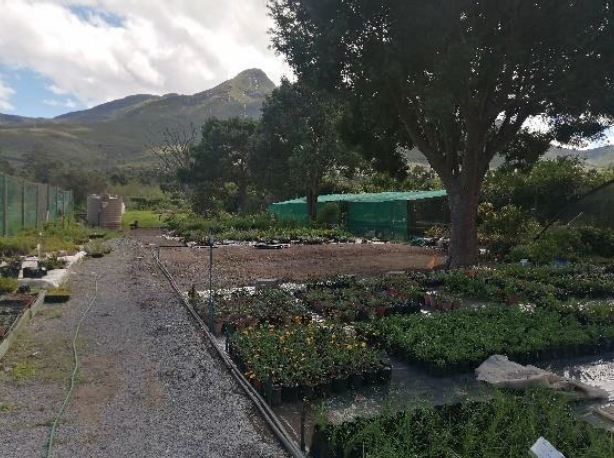
Should you be interested in having a look at the Yard, please make an appointment with Doug Cooke via the GRBG Office (044 874 1558). He is at the Propagation Yard on Mondays, Wednesdays and Thursdays.
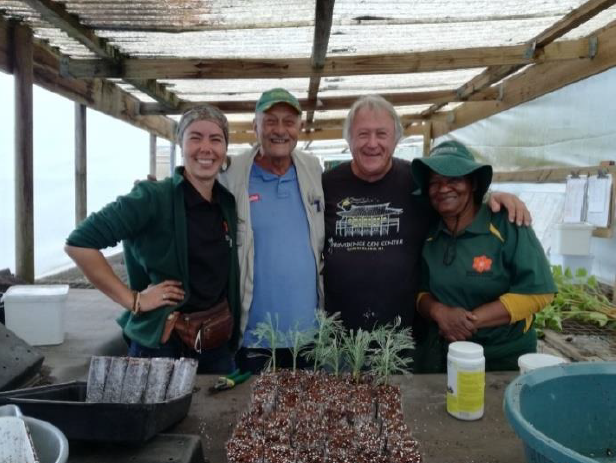
Wheelchair-friendly Boardwalk in Mushroom Meander
The wheelchair-friendly Forest Boardwalk in the Mushroom Meander is nearing completion and should be finished by the end of June. A number of wheelchair users have tested it and have given positive feedback.
The Boardwalk gives GRBG visitors who would not normally have access to the Garden’s indigenous forest (which was planted 20 years ago after a plantation was cleared) the opportunity to experience the beautiful forest environment.
Plant Collections
Our mandate ‘To Conserve and Display the Flora and Fauna of the Southern Cape’ guides us in all that we do. We have been working closely with SANBI to build our botanical integrity as an independent organisation, so that we can actively contribute to national and international scientific communities and especially to our local community.
Our focus thus has been on the identification, collection and growing of indigenous plants that are not yet represented in the GRBG, and the fruits of our labour are coming to light as we move into the glorious autumn months which are perfect for planting!
The improved facilities of the Propagation Yard enable us to provide healthy plants to the Botanical Garden and our retail nursery. With the necessary permits and permissions, we have collected over 60 new species of plants and seeds, and we are actively planning the development of old and new display beds in which to showcase these plants. We have undergone vigorous training and teambuilding and look forward to the fynbos seasons ahead.
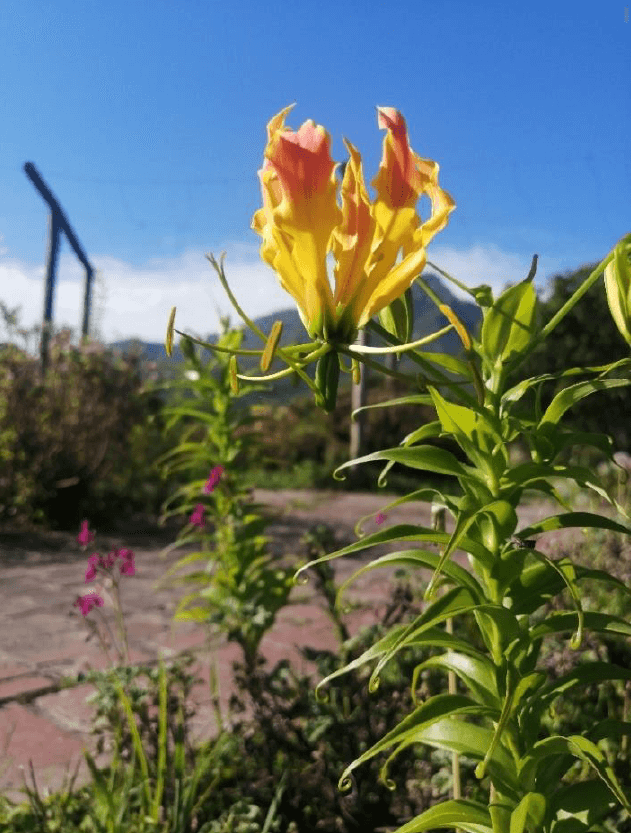
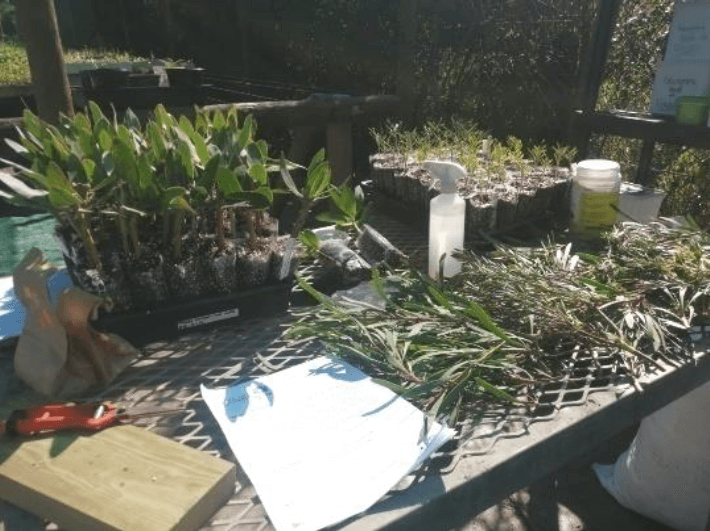
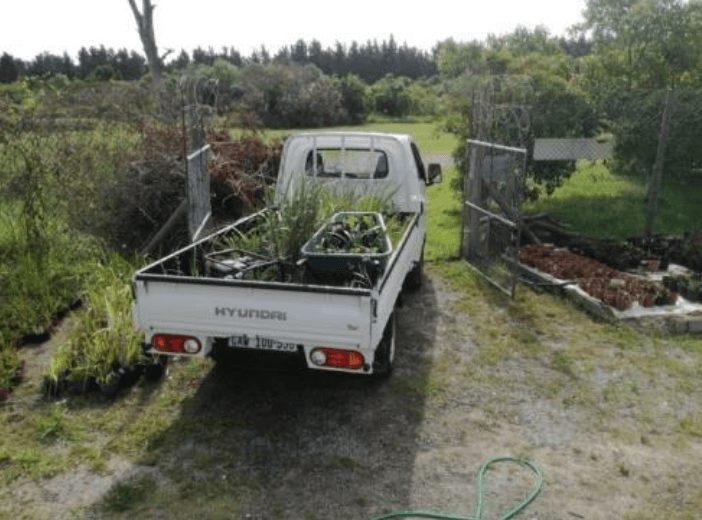
We want the Garden to be beautiful, educational, and accurately representative of our rich biodiversity! With that in mind, we aim to follow best practices regarding the natural environment in terms of our methods and materials that we use as well as how we interact with the natural environment.
As the seasons turn, watch out for the sprouting of geophytes, bulbs and corms in the various meadow displays that have been planted across the Garden.
We have established a small forest circle space which is the perfect spot for stillness, practicing yoga or meditation, or reading while basking in the warmth of the autumn sun.
The aloe entrance boasts an array of new succulents and the pathway along the dam has been well secured for everyone’s safety.
Book Nook
The George Public Library and Garden Route Botanical Garden have joined hands and heads this year to celebrate and showcase the wealth and significance of libraries as a public resource. The GRBG houses the Southern Cape Herbarium, a library of dried plants collected in our region. Comprised of common and rare plants, it is a guide for amateur enthusiasts, botanists, research and biodiversity institutes alike. Much like the George Library, this is an open access resource, available to the public for education and research.
The GRBG and George Library want to work together with the general public and our members to establish a ‘book nook’. This idea is guided by the success of the Herolds Bay Community Botanic Garden which boasts a Wendy House full of donated second-hand books and nature magazines, encouraging children and adults alike to find the time to enjoy nature and reading.
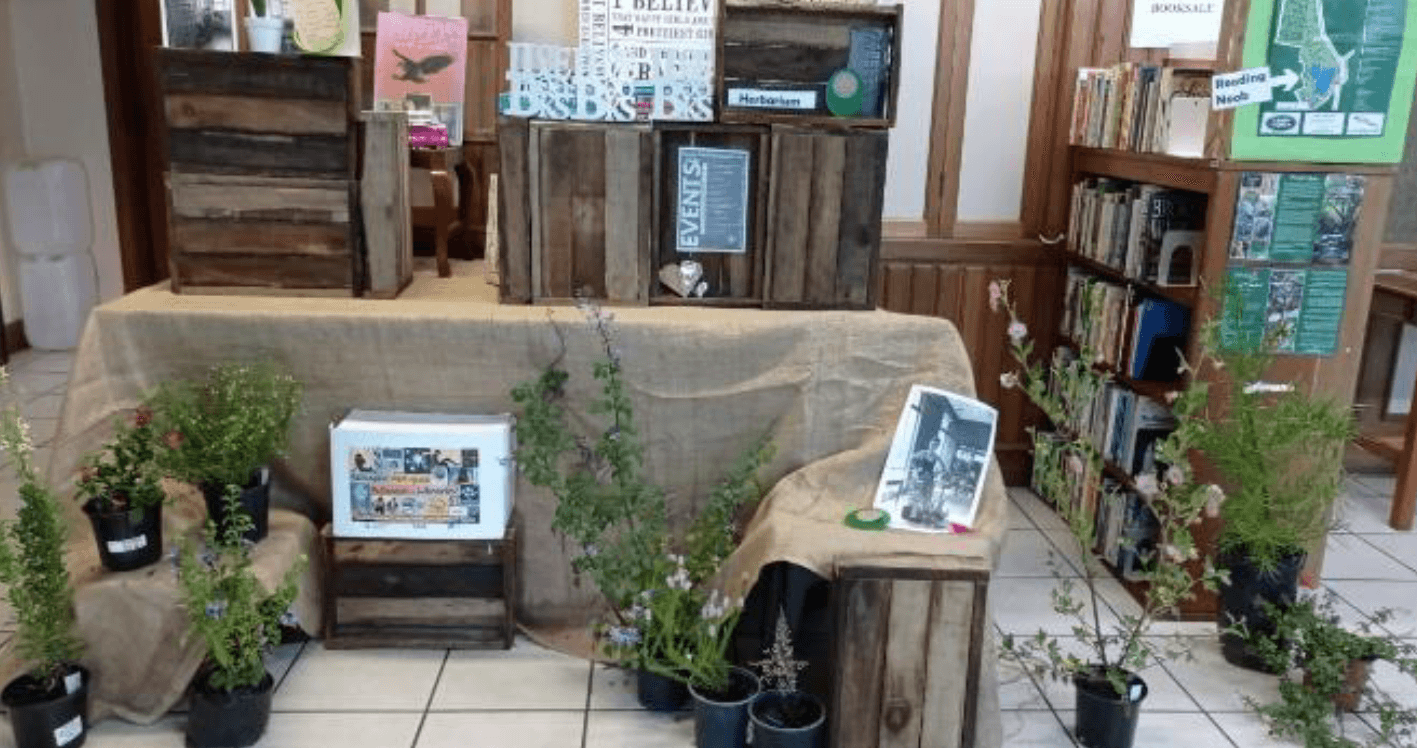
Reconstructing the Dam Walls & rehabilitating the Plant Life
As many GRBG Members and visitors have noticed, the Historical Dam inside the Botanical Garden is at an all-time low! Management, with the guidance of SAICE Dam Engineers and the municipality, has been maintaining a lowered water level to reduce further damage to the aged dam walls.
Following the heavy rains in November last year, storm water surge caused extensive damage to the vegetation and banks of the dam that was originally built in the early 1800s. To mitigate further damage to the banks and risk to downstream Caledon Street, the level is being maintained at its minimum capacity that still allows a safe habitat for the myriad of birds, frogs and fish that call the dam home.
While the Botanical Garden works with our local municipality to formulate a plan for the reconstruction of the dam wall, we are also developing a strategic plan to rehabilitate and restore the plants and wetland habitat after the construction works have taken place. To facilitate the implementation of this plan, a Fundraising Event will be held in collaboration with The Southern Cape Koi Chapter and other affiliates to cover the cost of sourcing, planting and growing the necessary plant species.
Hustle & Bustle in the Garden
It’s been a busy couple of months as the GRBG played host to a number of exciting events and activities.
Night Market
Keenan and his banjo set the tone for the Night Market hosted by the Botanical Garden on Friday, 1 April 2022. The fairy lights, aromas from various food stalls and the Marshmallow Café enhanced the atmosphere as locals chatted and milled about the array of stalls while their children played on the climbing frames and had their faces painted!
The evening was lively as the community enjoyed the vibrant outdoor setting and live music. Local crafters and small business owners showcased delectable vegan treats, traditional tacos and amazing gluten-free carrot cake – not to mention artisan chocolates.
Visitors enjoyed browsing trinkets such as handmade jewellery, craft coffee percolators, home-made doggy treats and handmade shoes and took home bunches of beautiful indigenous flowers, hand-poked tattoos and craft boxes for family bonding fun!
We are looking forward to our Winter Night market on 1 July 2022, where a marquee and fire pit will accompany live music and drinks to keep everyone’s spirits warm! Crafters, vendors and small business owners can contact Gabby at the Office via 044 874 1558 to book a stall.
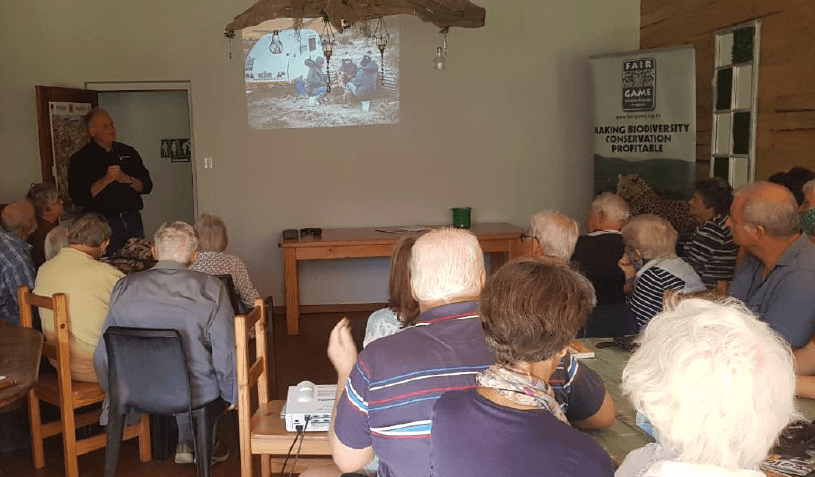
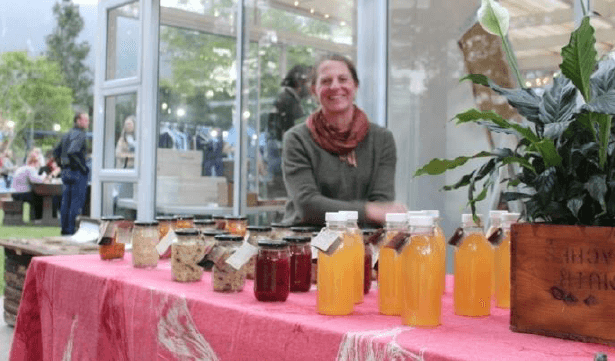
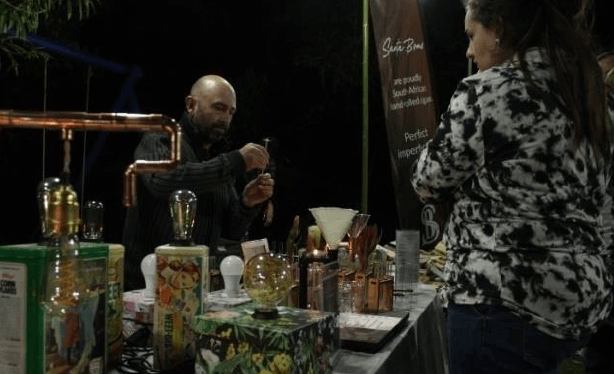
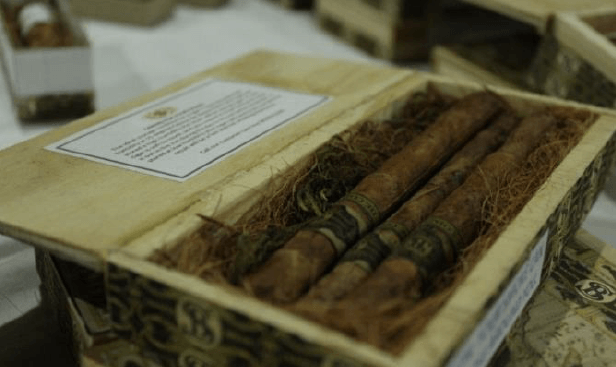
Leopard Conservation Talk with Landmark Foundation
Landmark Foundation hosted an enlightening talk on leopard conservation in South Africa. Dr Bool Smuts spoke about everything from Gin traps and the legislation and politics surrounding canned hunting to threats to predators and harmful farming practices. Together with his small team, Dr Bool has been battling injustice and giving a voice to those that don’t have one.
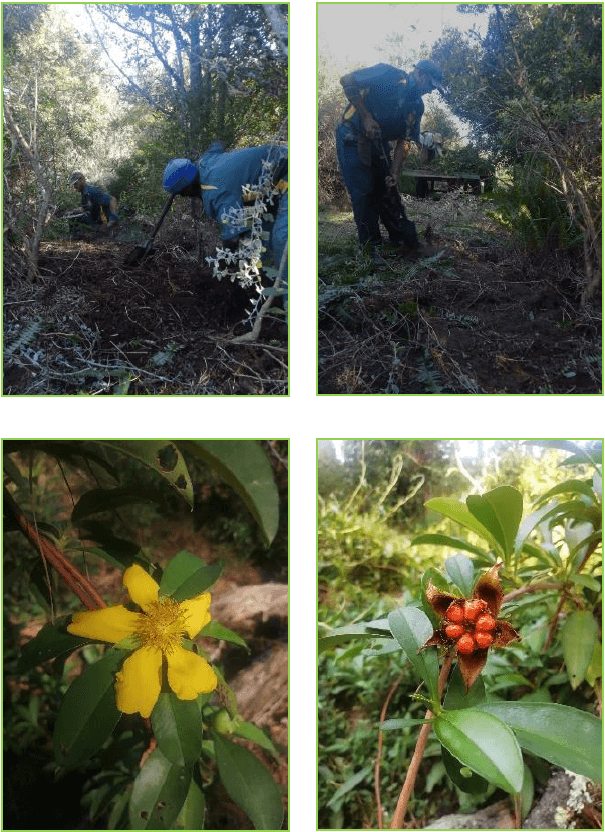
Koi Fish Show
This year, the Southern Cape Koi Chapter held their Annual Koi Fish Show at the Botanical Garden – a wonderful change of scenery from the parking lot of the Eden Meander. During the two-day event from 23-24 April, a total of 28 tanks showcasing an array of purebred, prize-winning fish were judged by Koi specialists from around the country.
The weekend was festive, featuring live music from local artists Onbekend, Wim Erasmus, Marius Landman and Allan Horseman, while local small business owners Mark, Hugo and Elmarie kept attendees fed and watered with delicious boerewors rolls, doughnuts and coffee!
The Southern Cape Koi Chapter and the Garden Route Botanical Garden look forward to collaborating in the future. So keep your eyes peeled for the next Koi fish-related event!
Alien Clearing
The GRBG hosted an alien identification workshop and hack event, which was well-attended by enthusiastic locals, NMMU conservation students, Birds of Prey Rehabilitation Centre and learners from York High School’s Enviro Club. The workshop focused on explaining the who, what and why of invasive alien plant species. GRBG Manager and Curator Corné Brink led the team to a hack site where Wattle, Eucalyptus, Pine, Elderberry and Bugweed were removed.
The team also came across a new specimen, Hibbertia scandens (flower and seed pictured left), a highly invasive creeper that is loved by birds and has taken root in our forests! This climbing yellow guinea flower is not yet on the Invasive Species List, but its habits and spreading nature is of concern to national officials who have been notified of its presence.
GRBG staff also took part in a spot clearing of the alien invasive plant commonly known as Sword Fern (Nephrolepis exaltata). This plant, with its aggressive root and bulb system, quickly spreads and monopolises the understory of forests and plantations. With the help of Glenwood House learners, the team managed to remove a tractor full of this fern and replace it with locally occurring understory shrubs and bulbs. This new display will mark the start of the wheelchair-friendly Forest Boardwalk at the entrance to the Mushroom Meander and is next to one of our stunning wedding venues!
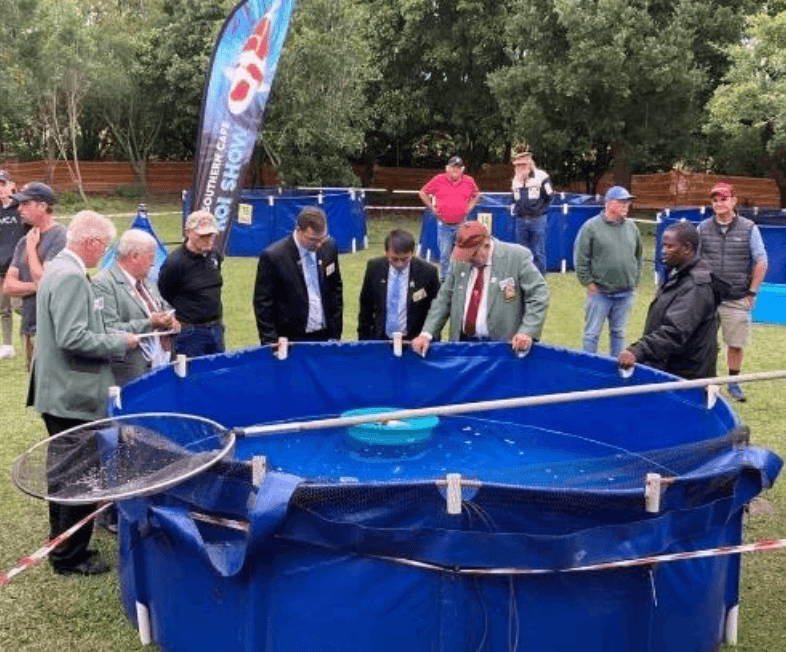
Botanical Society: Garden
Route Branch
The Botanical Society’s Garden Route Branch has been reinvigorated. A meeting with Head Office Chairman Bongani Mnisi and Conservation Manager Rupert Koopman was held at the Moriarty Hall to discuss and support the re-establishment of the Branch Committee. The Committee is excited to support the branch in achieving the aims of the Society which are to Know, Grow, Protect and Enjoy the Plants of Southern Africa!
The committee also has a keen interest in collaborating with like-minded plant enthusiasts along the Garden Route, conservancies and conservation organisations as well as with local scholars, youth and institutes. Seven Youth Memberships were awarded to University students and local plant enthusiasts at the meeting, to encourage and support their plant conservation passions and endeavours.
The Garden Route Botanical Society played an integral role in the establishment of the GRBG in 1997, and in 2013 sponsored the Propagation Yard – now the heart of the Garden.
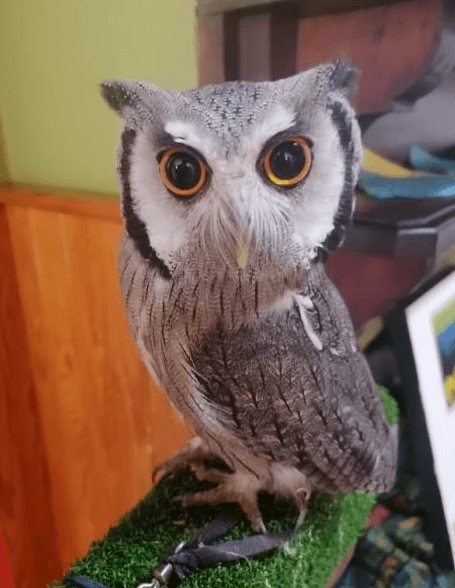
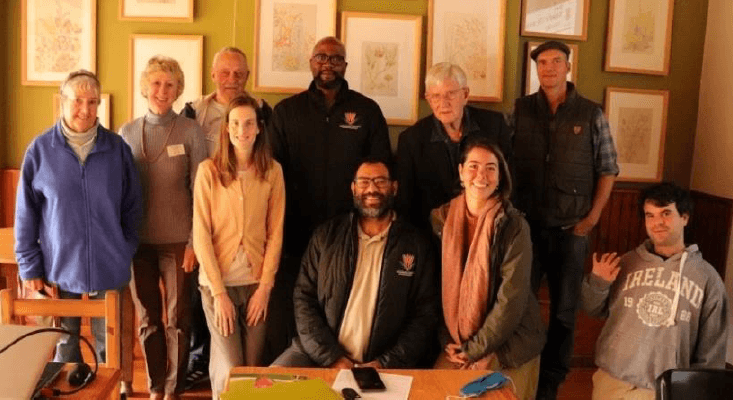
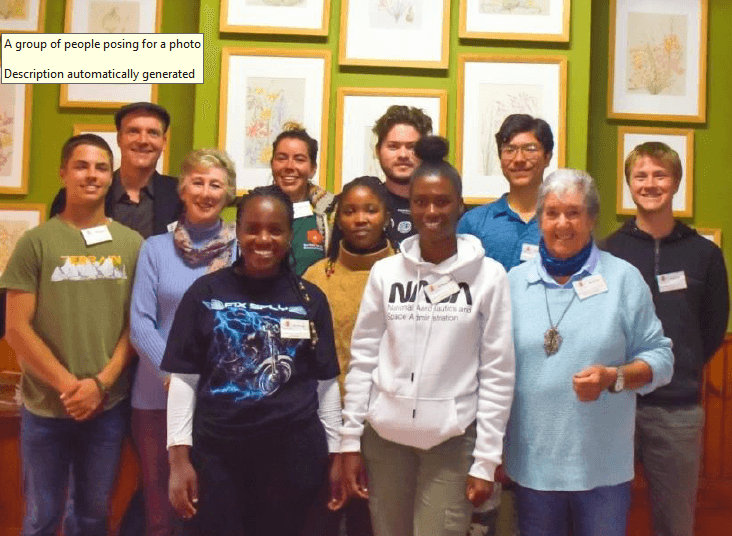
Poettry Readiing & Artt Exhiibiittiion
A lovely poetry reading and art exhibition was held in the Moriarty Hall on World Poetry Day (23 April), which happens to be William Shakespeare’s birthday, and the day he passed on. Thank you to Inspector (pictured below) and Simone from Birds of Prey who joined the fun and shared their knowledge of the rehabilitation of birds of prey and raptors.
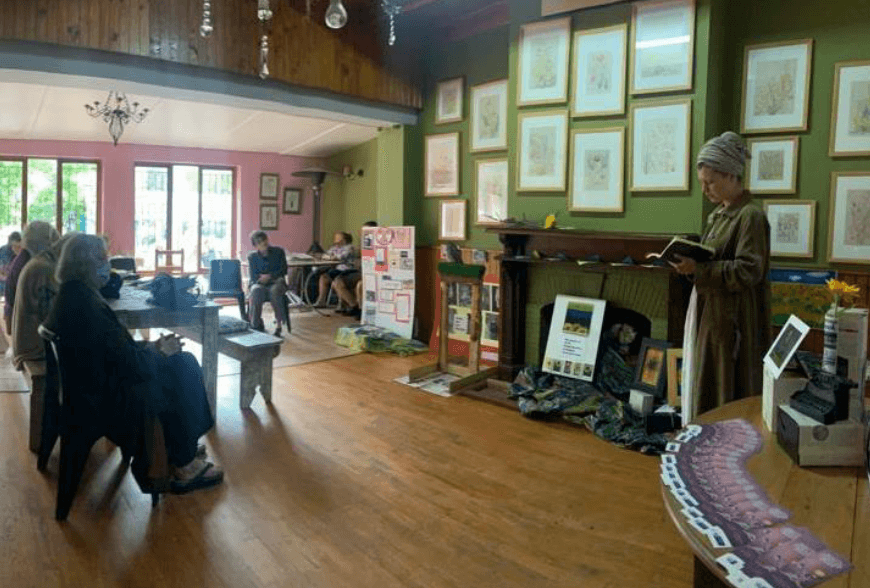
Upcoming Events
5
June
Picnic in the Park
Pack a picnic basket and bring your family and friends along to the Garden’s gazebo where live music by Allan H. will take us back to the 70s and 80s. Entrance is free.
8
June
Indigenous Medicinal Plant Forum
GRBG Members, volunteers and locals with an interest in indigenous plants, indigenous medicinal plant knowledge and the protection and sustainable use of medical plants are invited to this practical afternoon.
10
June
Alien Plant Identification Talk
All are welcome to an interesting and informative talk on alien plant species found locally and how to identify them. The entrance fee is R50 per person.
11
June
Photography Workshop
Expert photographer Johann Nysschenn will lead this Saturday morning workshop where you will learn the basics of manual digital photography, with a focus on finding your artistic flare. The workshop will take place in the Moriarty Hall (next to the Marshmallow Café), and costs R50 per person.
18
June
Outdoor Movie Night
Join us for a family-friendly movie night under the stars (or marquee, depending on the weather). Bring along your blanket, pillows, or a comfy chair. Popcorn and drinks will also be on sale.
View the Full Calendar
Show and Tell
The Show and Tell section is where members of the GRBG family share their personal accounts of the Garden. Each month, a volunteer, intern or staff member tells us more about an area in the Garden that recently caught their eye or kept them busy.
Of Cabbages and Kings
by Colin Ralston
The Walrus and the Carpenter
BY LEWIS CARROLL (an extract)
The time has come,’ the Walrus said,
To talk of many things:
Of shoes — and ships — and sealing-wax —
Of cabbages — and kings —
And why the sea is boiling hot —
And whether pigs have wings.’
Recently, I was able to photograph a Queen Malachite in the stream along the Mushroom Meander, which lead to the idea of listing all organisms found so far in the Garden Route Botanical Garden with either a ‘royal’ title or ‘cabbage’ in their common name.
The Queen Malachite, (Ecchlolestes nylephta), a large slender bodied damselfly, has a very localised distribution, restricted to mountain streams in indigenous forests and is testimony to the success of rehabilitating our stream.
South Africa’s National Flower is the King Protea (Protea cynaroides) – well known to all, I hope.
With its doubly-majestic common name, the Forest King Emperor (Charaxes siphares siphares) has the distinction of qualifying twice for inclusion in this list. This large, spectacularly coloured butterfly – subspecies very localised – has only been recorded once in the GRBG where one specimen fed for days on a sap flow, but only once opened its wings for the camera.
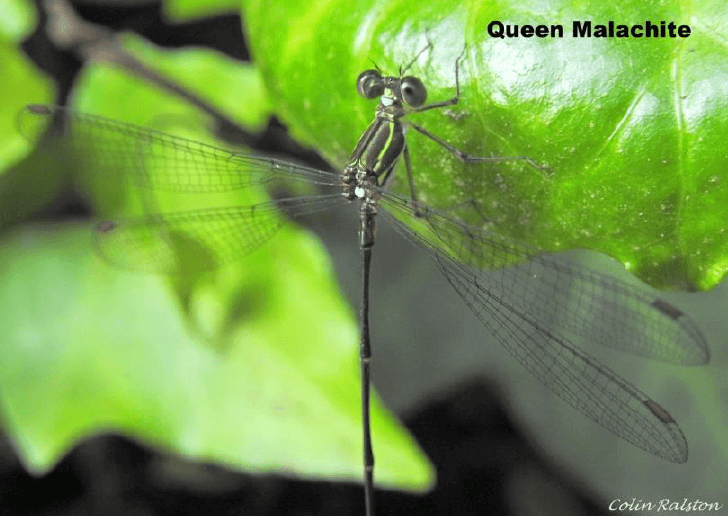
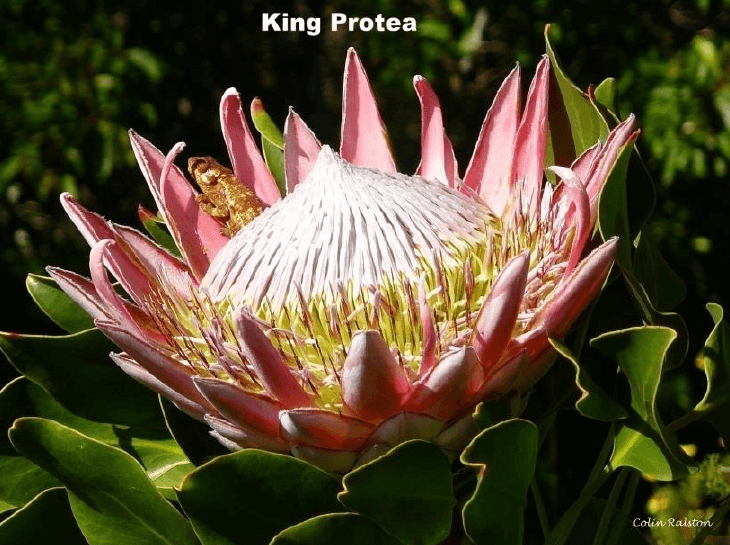
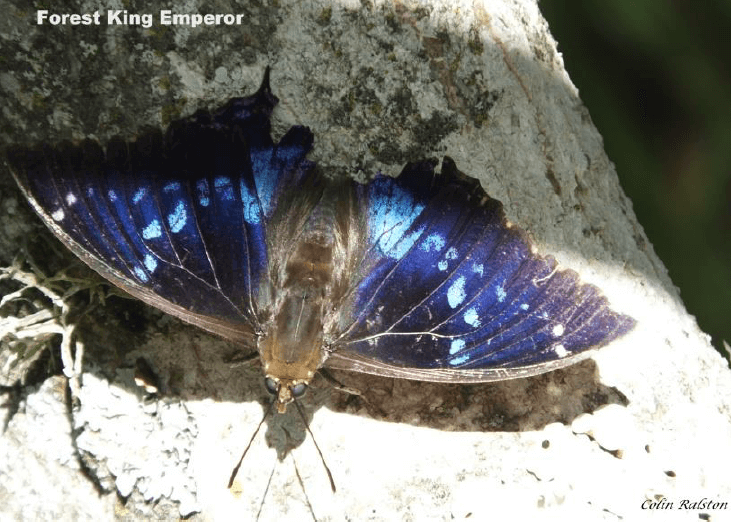
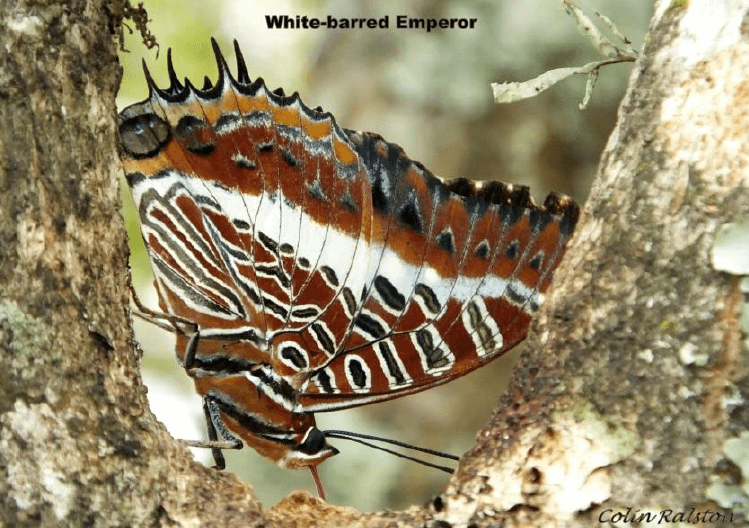
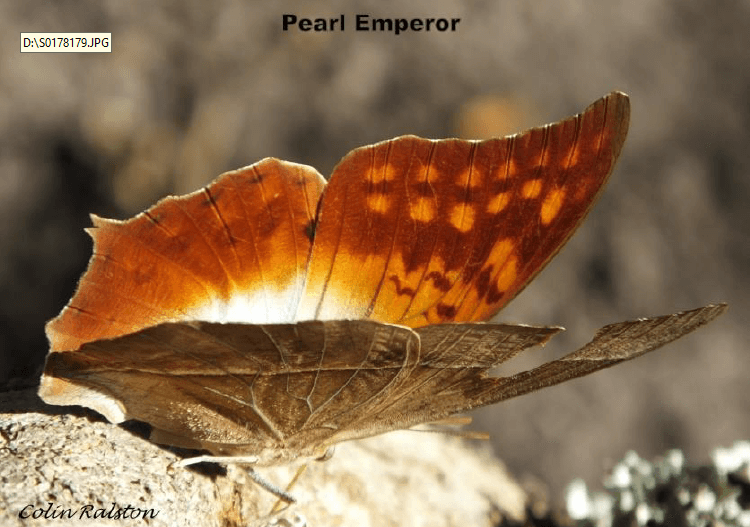
Two other butterflies, the White-barred Emperor and the Pearl Emperor, have been recorded in the Garden, both large, both seldom-seen and beautiful. The African Monarch (Danaus chrysippus) is a large, orange, black and white butterfly, common at times.
The King Bolete (Boletus edulis) is a large fungus with pores rather than gills, much sought after by mushroom munchers. It commands very high prices in the European food markets. Seasonal and host tree-dependent, it grows well in the area but the time and locality of it fruiting are jealously guarded secrets.
The Blue Emperor (Anax imperator) is the largest dragonfly recorded to date in the Garden. This large bright blue and green dragonfly is seldom seen at rest – the males seemingly endlessly patrolling their territory.
The Vagrant Emperor, another large green dragonfly is rarely recorded here.
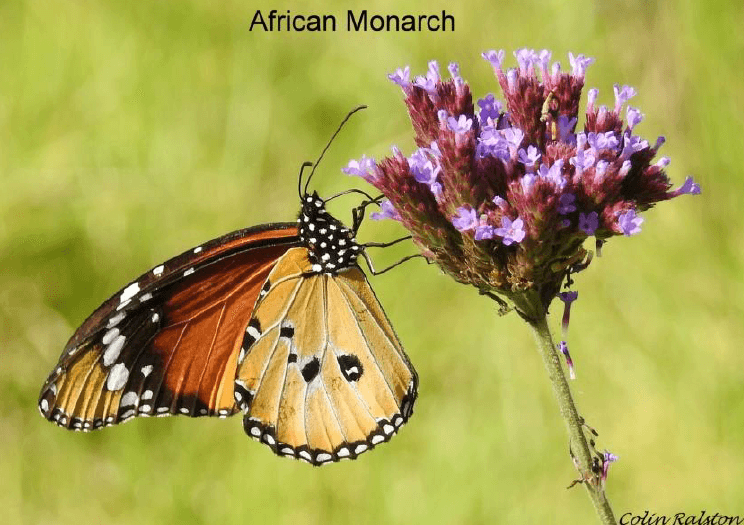
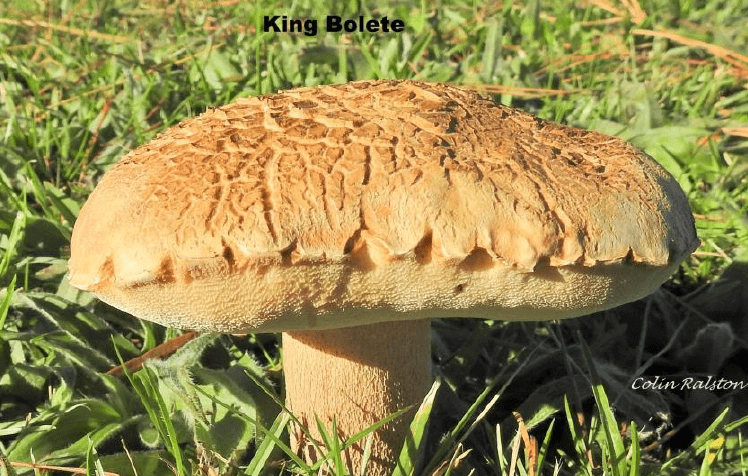
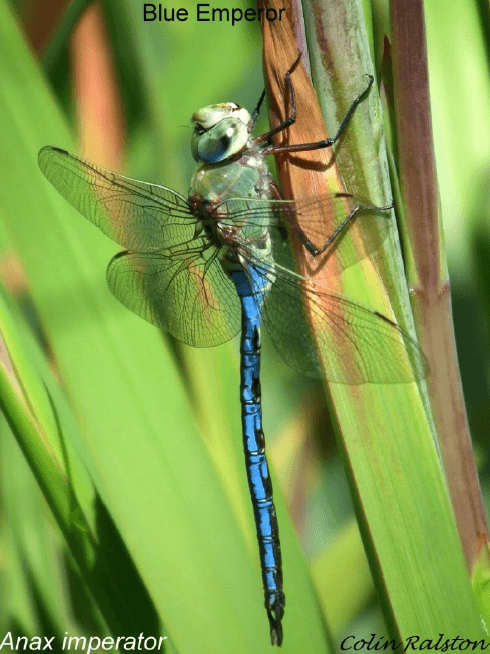
The Variable Prince, a large brown moth with transparent windows in its wings, is seldom seen here.
The Cabbage Emperor (Bunaea alcino) is a large moth with a distinctive appearance (black and red with white spikes) which has only been recorded in these larvae.
The Royal Ghost Frog (Heleophyryne regis) is a mountain stream specialist, confined to the Southern Cape. That the tadpoles survived the last two flood events is amazing! It’s a small frog with distinctive tee shaped toes and the tadpoles cling to rocks with their mouths.
The five Kingfisher species: Malachite, Pied, Giant, Brown-hooded and Half-collared all make the list. (An image of the Pied Kingfisher taken by Etienne de Beer adorns the first page of this newsletter.)
The Cabbage White (Pieris brassicae) probably the most often seen white butterfly locally, is a problem species imported from Europe that eats cabbages – a major pest.
To balance the royals, there are a lot of organisms with ‘common’ or ‘garden’ in their common name. Any other suggestions for additions to the royals list?
To borrow another line, this time from the musical The Sound of Music, “these are [just] a few of my favourite things”.
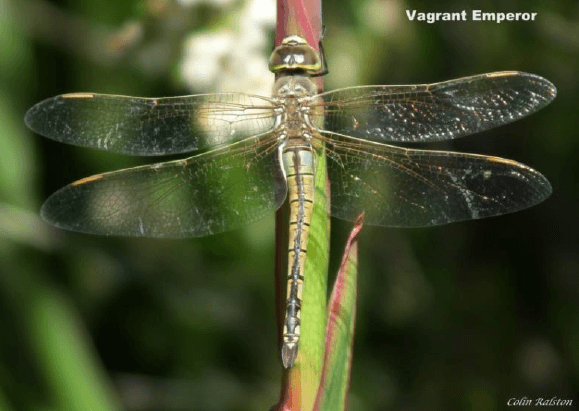
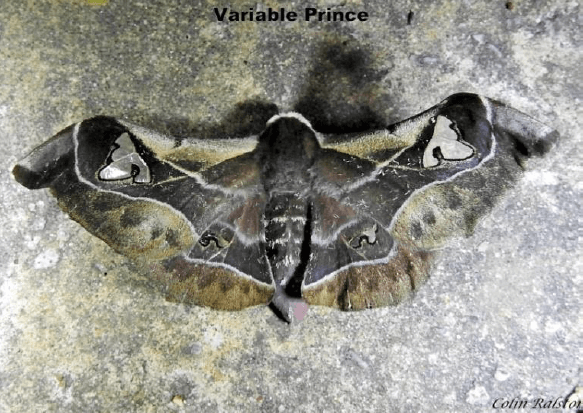
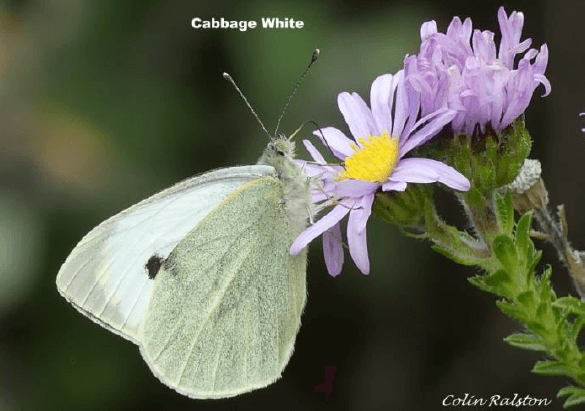
Attributions: This newsletter was designed using resources from
www.freepik.com, including images by macrovector, GraphiqStock and vectorjuice.
Content: Elizabeth Boshoff, Corné Brink, Etienne de Beer and Colin Ralston.
Background and Banner image: © Etienne de Beer (CC BY-NC 4.0).
Design and Layout: Nicole Jonklass
